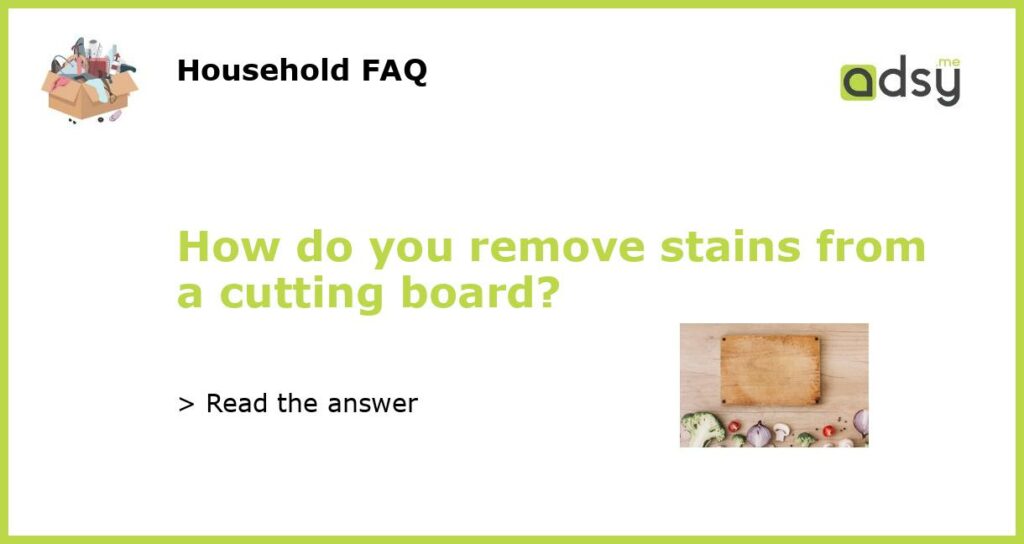Understanding the Importance of Clean Cutting Boards
A cutting board may seem like a simple kitchen tool, but it is vital to ensure it is clean and safe to use. As cutting boards are often in direct contact with food, any bacteria or stains on them can transfer to the food, potentially causing illness. Therefore, regular cleaning and stain removal are necessary to prevent cross-contamination and preserve the quality of the food.
Common Cutting Board Stains and Causes
There are several reasons why a cutting board can become stained, including prolonged exposure to colorful foods, contact with acidic ingredients, and cutting meat. Common stains include red meat stains, tomato stains, and turmeric stains. Knowing the cause of the stain can help determine the right cleaning method.
Cleaning Methods for Various Cutting Board Stains
For red meat stains, a simple solution of hydrogen peroxide and baking soda can be applied to the board and left for several minutes before rinsing with hot water. Tomato stains can be removed by rubbing a mixture of baking soda and water onto the board, followed by washing with soap and hot water. Turmeric stains can be more challenging to remove, but a mix of salt and vinegar can often work. To prevent staining on a wooden cutting board, it is best to rinse and dry it immediately after contact with food.
General Cutting Board Maintenance and Cleaning Tips
In addition to removing stains, proper cleaning and maintenance can extend the life of a cutting board. After each use, the board should be washed thoroughly with hot water and soap, dried completely, and stored in a dry, well-ventilated area. It is also recommended to oil wooden cutting boards regularly to prevent them from drying out and cracking. When in doubt, it is always best to err on the side of caution and replace an old, heavily stained board with a new one.
Cutting Board Material and Sanitation Considerations
The type of cutting board used can also have an impact on its cleanliness and safety. Plastic boards are generally easier to sanitize since they can be run through a dishwasher, while wooden boards require more careful washing and maintenance. However, studies have shown that plastic cutting boards can harbor bacteria more easily than wooden ones, unless they are regularly sanitized. No matter the material, it is essential to follow proper cleaning and sanitization procedures to ensure the safety of food.






